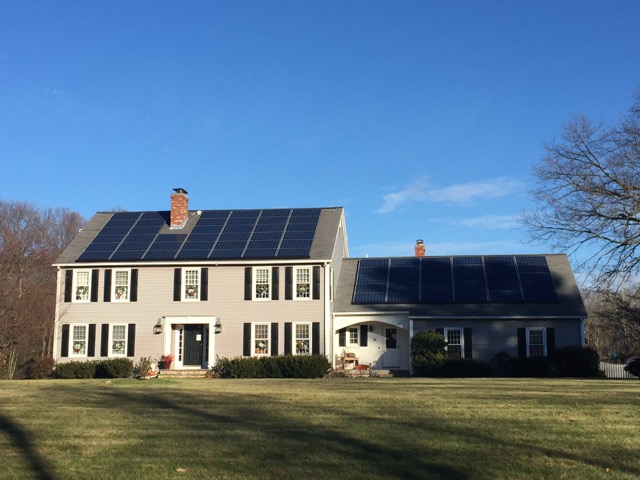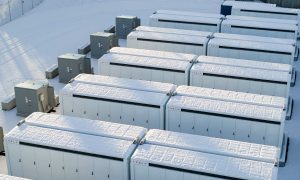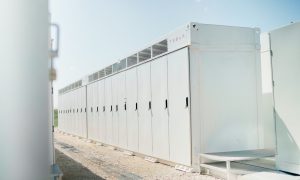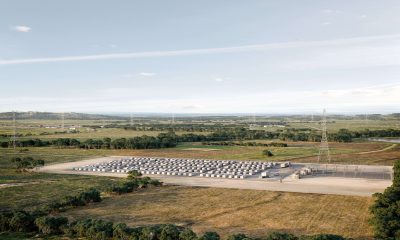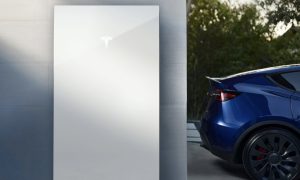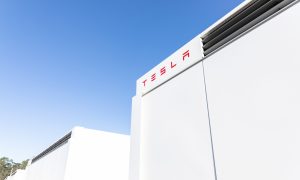Energy
A Tesla Powerwall-powered Home: Will it Pay Off?
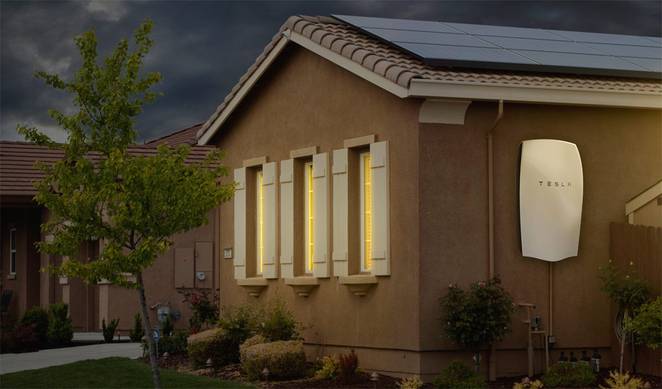
We’ve all heard by now that the Tesla Powerwall home battery is designed to store electricity, generated from solar panels and electricity captured from utility companies during off-peak rates, and provide overall independence from the grid.
It sounds like an amazing product, and I’m sure it is, but will it pay off to own one?
Understanding the Powerwall
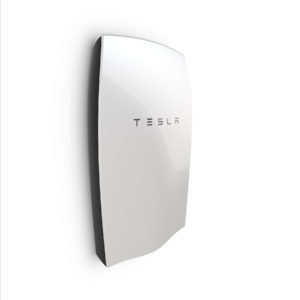 The Powerwall is an energy storage unit otherwise known as a battery. It comes in two sizes today (although they can be stacked/expanded), 7kWh and 10kWh (what’s a kWh?) and costs $3,000 and $3,500, respectively. Note that the cost excludes an inverter and installation, both of which can be quite expensive to the point it can double the total out-of-pocket cost. The specs for the Powerwall come in at a whopping 220 lbs / 100 kg (unclear as to which capacity this represents) and 52.1″ x 33.9″ x 7.1″ or roughly 3.5 x 3 feet in dimension.
The Powerwall is an energy storage unit otherwise known as a battery. It comes in two sizes today (although they can be stacked/expanded), 7kWh and 10kWh (what’s a kWh?) and costs $3,000 and $3,500, respectively. Note that the cost excludes an inverter and installation, both of which can be quite expensive to the point it can double the total out-of-pocket cost. The specs for the Powerwall come in at a whopping 220 lbs / 100 kg (unclear as to which capacity this represents) and 52.1″ x 33.9″ x 7.1″ or roughly 3.5 x 3 feet in dimension.
The concept is simple, the Powerwall battery stores energy generated through your utility company when rates are the lowest (or through solar panels) and ready on tap when you need it.
Installation
Tesla notes that the cost of the Powerwall does not include the inverter or installation. An inverter alone such as the one SolarCity uses can cost around $2,000 which does not include a separate installation cost.
Installation will vary depending on the following:
- Does your residence have an existing net metering?
- Is it already wired for a generator?
- What is the distance between the photovoltaic solar panel hardware and the location to where Tesla’s Powerwall would be mounted? The shorter the distance, the less cabling to run and thus a lower installation cost.
At 200+ pounds in weight, you’ll need to ensure that there’s ample space and structural support to where the Powerwall will be installed. There also needs to be sufficient cooling space and ventilation in the mounting location.
Primary Use Cases for the Tesla Powerwall
Tesla proposes two primary use cases for the Powerwall:
- Time of Use (TOU) offset
- Backup power
Let’s explore each of these options.
Powerwall provides a Time of Use offset
In many states and countries from around the world, a Time of Use (TOU) electricity rate is available through the local utility company. The concept is simple: you pay different rates at different times of the day. During peak hours the rates are higher than they are during off hours. Many Tesla owners that live in these areas that have TOU pricing will charge their cars during the evenings when rates are typically the lowest.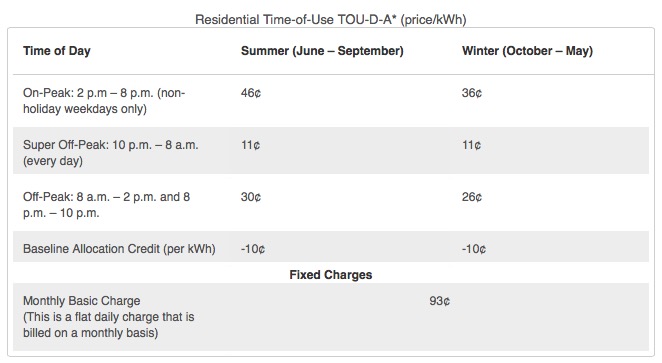
Unfortunately TOU pricing is not widespread here in Massachusetts but if you’re able to take advantage of it in your area, then the Powerwall may bring some value although it would take quite awhile to recoup the initial investment.
Taking a look at TOU rates from Southern California Edison, we can see that their off-peak rate is $0.11 while peak rate comes in at $0.46 for a difference of $0.35 per kWh. The large Powerwall unit is capable of storing 10kWh. Assuming you are able to fully charge the battery during off-peak hours each and every day, you would save approximately $3.50 per day.
Since the unit itself (without install) costs $3,500, it would take approximately 1000 days or just shy of 3 years before you “broke even”. This is assuming the utility company continues to offer off-peak rates throughout the year. Add in the installation costs and you’re looking at closer to 5 years before breaking even on the Tesla Powerwall investment
Of course, there’s the argument that having a solar panel system would allow you to charge the Powerwall battery for free through sunlight, but only if you fully ignore the cost of the solar system itself.
RELATED >>> My journey to installing a SolarCity system
Owning or leasing a solar system comes with its own break-even calculations so you’ll have to factor that into the equation with the Powerwall.
Powerwall provides backup power
The other stated potential use case for the Powerwall is to use it for backup power in the event your home power is completely cut off from the grid.
Don’t expect to power your entire house with just a single 10kWh Powerwall. Tesla’s site provides some good examples of how much power common home appliances draw. For instance the Powerwall would be able to power a typical refrigerator for 2 days. This time would of course be extended if you were able to replenish the battery through a solar system.
In the case of an extended power outage (think Zombie apocalypse), you may be able to power essential home services indefinitely with a properly sized battery and solar system.
The ability to re-fill from solar is a nice benefit, but the alternative would be a noisy gasoline powered generator.
 A 6.5kW generator can be had for for as little as $800. That generator can output 32,500kWh (50% load x 10 hours according that link). That’s 3x the power at less than 25% of the cost of Tesla’s offering. The cost for that power? About $15. The generator, unlike the Powerall, is mobile and can go anywhere you go. Generators typically have very low maintenance and can be re-filled quickly regardless of weather conditions (hurricanes, snow storms, etc – all likely conditions that will cause loss of power).
A 6.5kW generator can be had for for as little as $800. That generator can output 32,500kWh (50% load x 10 hours according that link). That’s 3x the power at less than 25% of the cost of Tesla’s offering. The cost for that power? About $15. The generator, unlike the Powerall, is mobile and can go anywhere you go. Generators typically have very low maintenance and can be re-filled quickly regardless of weather conditions (hurricanes, snow storms, etc – all likely conditions that will cause loss of power).
I have a Honda 6.5kW generator. My house has its own well, septic etc. When power goes out I fire up the generator and power the things I need. I have water, hot showers, heat (oil, fired by electric which is powered by the generator), lights etc. I have run for days off that generator in some of the worst weather conditions New England can throw at me. I’d argue if you’re serious about backup power, then a generator is still the best option.
Powerwall, as a backup power option and also from a pure cost-perspective, I feel is only a good fit for those who have a solar system installed and live in an area where the climate is more stable.
Energy
Tesla Lathrop Megafactory celebrates massive Megapack battery milestone
The Tesla Megapack is the backbone of Tesla Energy’s battery deployments.
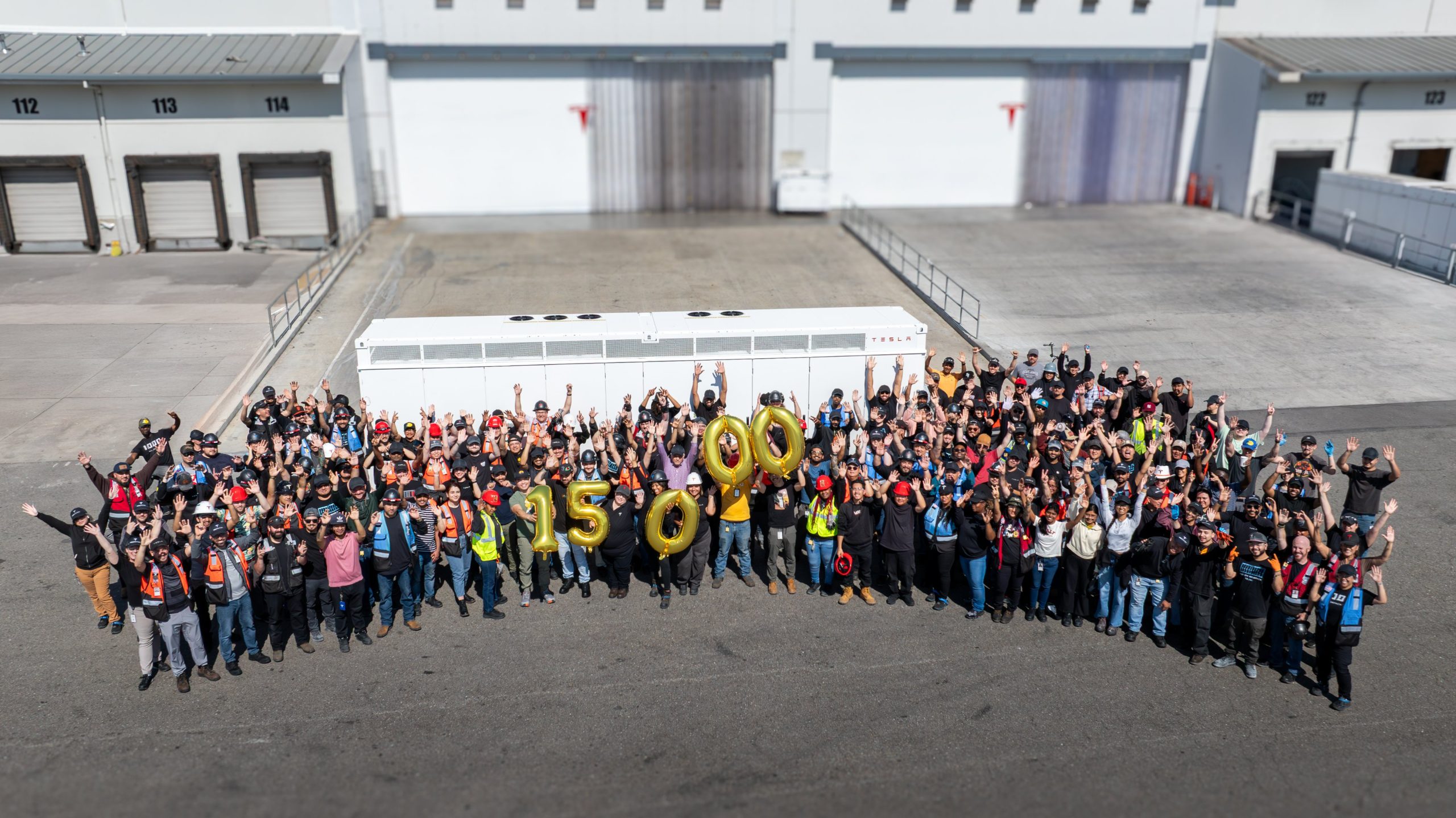
The Tesla Lathrop Megafactory recently achieved a new milestone. As per the official Tesla Megapack account on X, the Lathrop Megafactory has produced its 15,000th Megapack 2 XL battery.
15,000 Megapack Batteries
Tesla celebrated the milestone with a photo of the Lathrop Megafactory team posing with a freshly produced Megapack battery. To commemorate the event, the team held balloons that spelled out “15,000” as they posed for the photo.
The Tesla Megapack is the backbone of Tesla Energy’s battery deployments. Designed for grid-scale applications, each Megapack offers 3.9 MWh of energy and 1.9 MW of power. The battery is extremely scalable, making it perfect for massive energy storage projects.
More Megafactories
The Lathrop Megafactory is Tesla’s first dedicated facility for its flagship battery storage system. It currently stands as the largest utility-scale battery factory in North America. The facility is capable of producing 10,000 Megapack batteries every year, equal to 40 GWh of clean energy storage.
Thanks to the success of the Megapack, Tesla has expanded its energy business by building and launching the Shanghai Megafactory, which is also expected to produce 40 GWh of energy storage per year. The ramp of the Shanghai Megafactory is quite impressive, with Tesla noting in its Q1 2025 Update Letter that the Shanghai Megafactory managed to produce over 100 Megapack batteries in the first quarter alone.
Tesla Energy’s Potential
During the first quarter earnings call, CEO Elon Musk stated that the Megapack is extremely valuable to the energy industry.
“The Megapack enables utility companies to output far more total energy than would otherwise be the case… This is a massive unlock on total energy output of any given grid over the course of a year. And utility companies are beginning to realize this and are buying in our Megapacks at scale,” Musk said.
Energy
Tesla Megapacks powers the xAI Colossus supercomputer
Tesla Megapacks step in to stabilize xAI’s Colossus supercomputer, replacing natural gas turbines. Musk’s ventures keep intertwining.

Tesla Megapack batteries will power the xAI Colossus supercomputer in Memphis to ensure power stability. The collaboration between Tesla and xAI highlights the synergy among Elon Musk’s ventures.
The artificial intelligence startup has integrated Tesla Megapacks to manage outages and demand surges, bolstering the facility’s reliability. The Greater Memphis Chamber announced that Colossus, recently connected to a new 150-megawatt electric substation, is completing its first construction phase. This transition addresses criticism from environmental justice groups over the initial use of natural gas turbines.
“The temporary natural gas turbines that were being used to power the Phase I GPUs prior to grid connection are now being demobilized and will be removed from the site over the next two months.
“About half of the operating turbines will remain operating to power Phase II GPUs of xAI until a second substation (#22) already in construction is completed and connected to the electric grid, which is planned for the Fall of 2025, at which time the remaining turbines will be relegated to a backup power role,” the Chamber stated.
xAI’s rapid development of Colossus reflects its ambition to advance AI capabilities, but the project has faced scrutiny for environmental impacts. The shift to Megapacks and grid power aims to mitigate these concerns while ensuring operational continuity.
The Megapack deployment underscores the collaboration among Musk’s companies, including Tesla, SpaceX, Neuralink, and The Boring Company. Tesla appears to be the common link between all of Musk’s companies. For example, The Boring Company built a tunnel in Giga, Texas. In addition, Musk has hinted at a potential collaboration between the Tesla Optimus Bot and Neuralink. And from January 2024 to February 2025, xAI invested $230 million in Megapacks, per a Tesla filing.
Tesla Energy reported a 156% year-over-year increase in Q1 2025, deploying 10.4 GWh of storage products, including Megapacks and Powerwalls. Tesla’s plans for a new Megapack factory in Waller County, Texas, which is expected to create 1,500 jobs in the area, further signal its commitment to scaling energy solutions.
As xAI leverages Tesla’s Megapacks to power Colossus, the integration showcases Musk’s interconnected business ecosystem. The supercomputer’s enhanced stability positions xAI to drive AI innovation, while Tesla’s energy solutions gain prominence, setting the stage for broader technological and economic impacts.
Energy
Tesla Energy celebrates one decade of sustainability
Tesla Energy has gone far since its early days, and it is now becoming a progressively bigger part of the company.
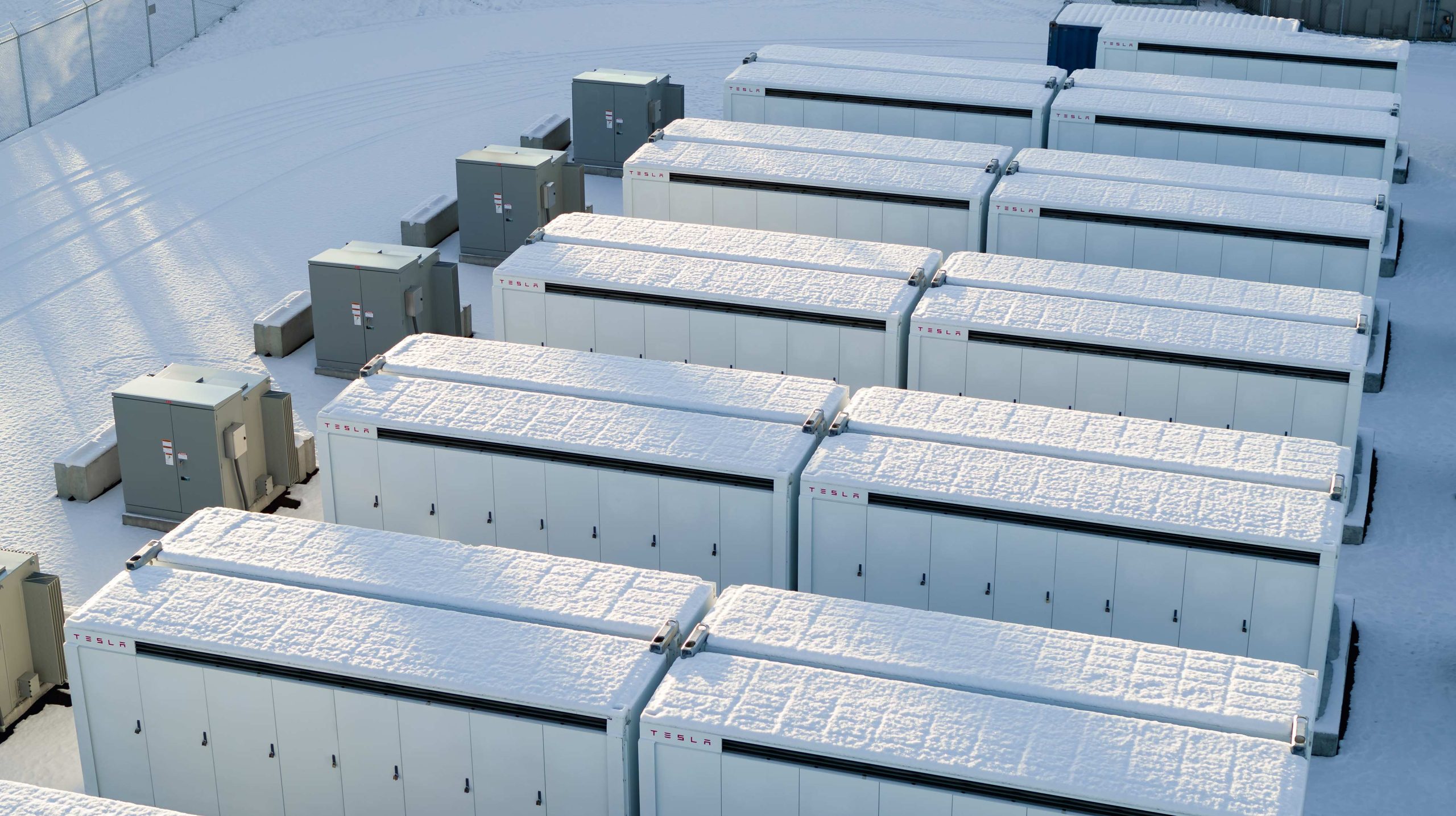
Tesla Energy recently celebrated its 10th anniversary with a dedicated video showcasing several of its milestones over the past decade.
Tesla Energy has gone far since its early days, and it is now becoming a progressively bigger part of the company.
Tesla Energy Early Days
When Elon Musk launched Tesla Energy in 2015, he noted that the business is a fundamental transformation of how the world works. To start, Tesla Energy offered the Powerwall, a 7 kWh/10 kWh home battery system, and the Powerpack, a grid-capable 100 kWh battery block that is designed for scalability. A few days after the products’ launch, Musk noted that Tesla had received 38,000 reservations for the Powerwall and 2,500 reservations for the Powerpack.
Tesla Energy’s beginnings would herald its quiet growth, with the company later announcing products like the Solar Roof tile, which is yet to be ramped, and the successor to the Powerwall, the 13.5 kWh Powerwall 2. In recent years, Tesla Energy also launched its Powerwall 3 home battery and the massive Megapack, a 3.9 MWh monster of a battery unit that has become the backbone for energy storage systems across the globe.
Key Milestones
As noted by Tesla Energy in its recent video, it has now established facilities that allow the company to manufacture 20,000 units of the Megapack every year, which should help grow the 23 GWh worth of Megapacks that have already been deployed globally.
The Powerwall remains a desirable home battery as well, with more than 850,000 units installed worldwide. These translate to 12 GWh of residential entry storage delivered to date. Just like the Megapack, Tesla is also ramping its production of the Powerwall, allowing the division to grow even more.
Tesla Energy’s Role
While Tesla Energy does not catch as much headlines as the company’s electric vehicle businesses, its contributions to the company’s bottom line have been growing. In the first quarter of 2025 alone, Tesla Energy deployed 10.4 GWh of energy storage products. Powerwall deployments also crossed 1 GWh in one quarter for the first time. As per Tesla in its Q1 2025 Update Letter, the gross margin for the Energy division has improved sequentially as well.
-

 News5 days ago
News5 days agoTesla Robotaxi’s biggest challenge seems to be this one thing
-

 News2 weeks ago
News2 weeks agoTesla confirms massive hardware change for autonomy improvement
-

 Elon Musk2 weeks ago
Elon Musk2 weeks agoElon Musk slams Bloomberg’s shocking xAI cash burn claims
-

 News2 weeks ago
News2 weeks agoTesla China roars back with highest vehicle registrations this Q2 so far
-

 News2 weeks ago
News2 weeks agoTesla features used to flunk 16-year-old’s driver license test
-

 News2 weeks ago
News2 weeks agoTexas lawmakers urge Tesla to delay Austin robotaxi launch to September
-

 News2 weeks ago
News2 weeks agoTesla dominates Cars.com’s Made in America Index with clean sweep
-

 News2 weeks ago
News2 weeks agoTesla’s Grok integration will be more realistic with this cool feature

